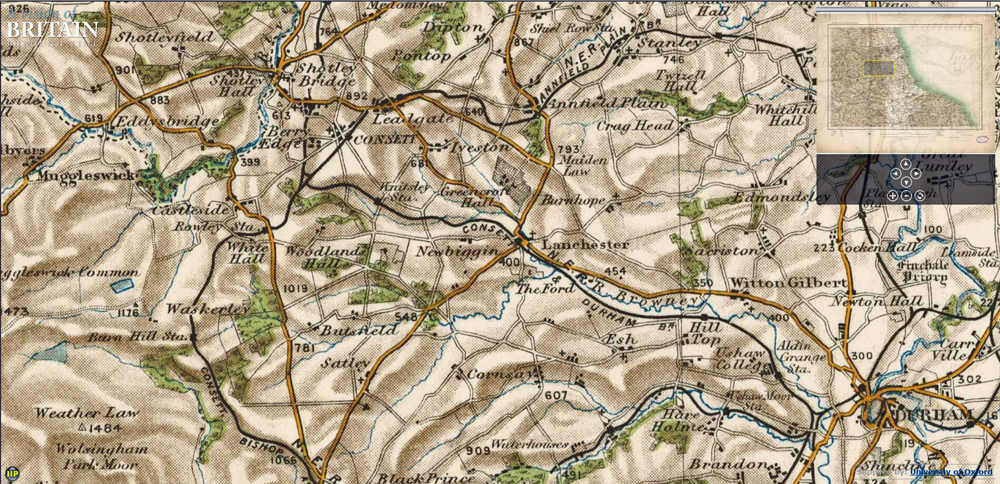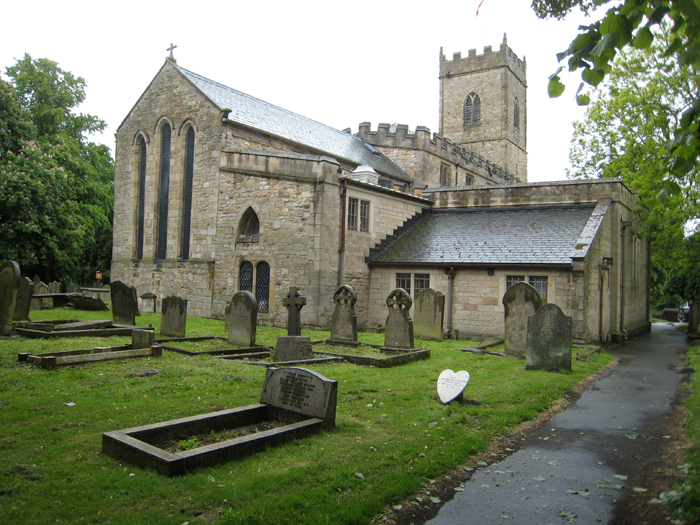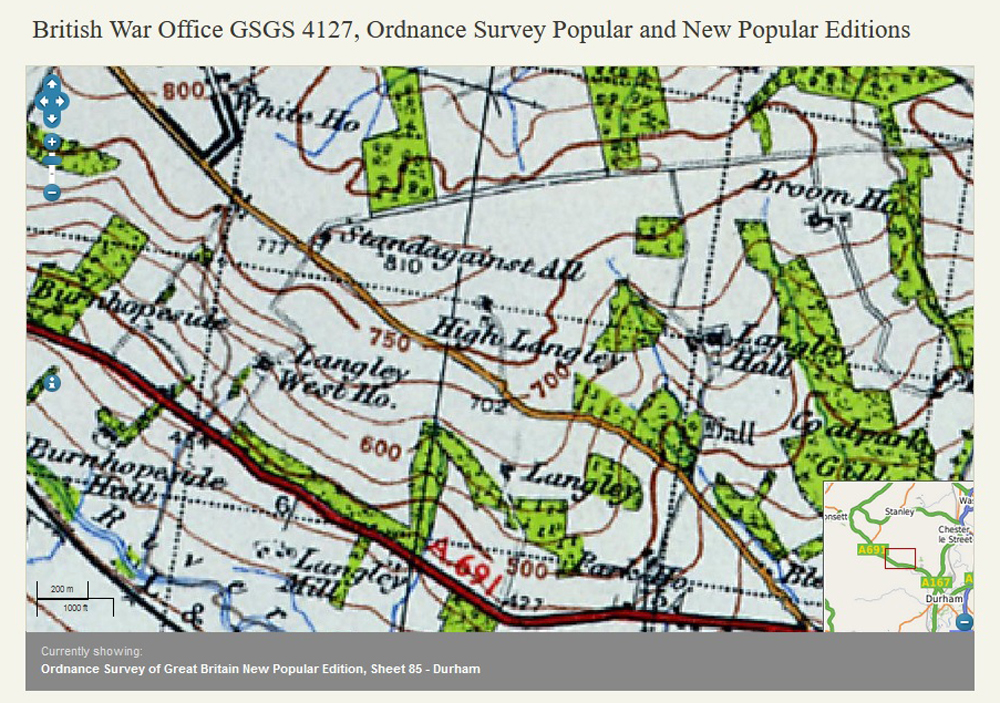There’s a local legend in County Durham, England about a farmer who outwitted a would-be robber on his way home one dark night. As the tale goes, farmer Robert Mitcheson, of Knitsley, was at the Wolsingham Fair when he noticed a well-dressed stranger who seemed to be watching him. He became quite concerned when he realized the man’s horse was in the stable next to his own mount, so he mentioned his suspicions to the stableboy. When the man came for his horse shortly after Mitcheson left, the stableboy delayed the stranger as long as he could.
While Mitcheson was still a few miles from home, he heard a horse galloping behind him. His own horse was fast, however, and he managed to stay ahead of his pursuer. He also remained on the main highway, rather than take his usual shortcut through a thickly wooded ravine.
Mitcheson made it home safely, but a few days later, a deep grave was discovered in the woods. The stranger and his accomplices had probably planned to rob and kill him there.1
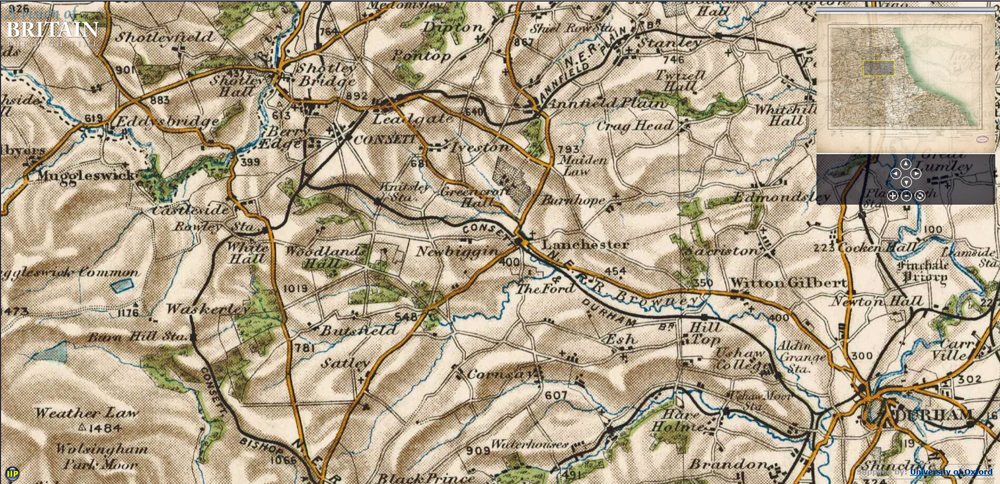
When I first ran across this story, I had no idea whether this farmer was related to my Mitcheson family in northeast England. I now suspect he was. Robert Mitcheson (1728-1812), a farmer in the hamlet of Knitsley, in northern County Durham, was the eldest son of my five times great-grandfather Robert Mitcheson, of Lanchester Parish, and he had a son and a grandson, both named Robert Mitcheson, who also farmed in Knitsley.
Initially, all I knew about Robert Mitcheson of Knitsley was his date of baptism: February 1, 1728.2 Now I have discovered a surprising amount of information about this man and his descendants. They are listed in a variety of directories on Find My Past and Ancestry, in the UK census, and in land tax and poll book records.
The first clue I came across was a big one: the transcription of a monumental inscription. It made it clear that Robert Mitcheson of Knitsley lived well into his 80s, and it provided the key to finding his many descendants.
Here is a transcription of that memorial stone in Lanchester parish churchyard:
“In memory of Robert Mitcheson of Knitsley who died November 12th 1815 [sic] aged 87 years. Also Jane his wife who died April 22 1810 aged 86 years. Also Robert their son who died at Hurbuck February 7th aged 79 years. Also Ann his wife who died at Knitsley in April 1827 aged 56 years and was near Roxby’s stone in this yard. Also Ann daughter of the two last named who died in Hurbuck March 26th 1834 aged 28 years. Also John Mitcheson son of the first named who died at Hurbuck June 25 1847 aged 87 years. Also Thomas John son of the above Robert and Ann Mitcheson who died at Lanchester 15th February 1881 aged 71 years. [P.R. – 61 years.]”3
That text is hard to follow, so here is a more complete summary, including several more children for Robert and Ann and three family members named Robert Mitcheson.
1. Robert Mitcheson (1728-1812) of Knitsley married Jane Heppel (1725-1810) in Medomsley Parish, County Durham, 1757.4
2. Robert Mitcheson (1759-1837) married Ann Roxby (1769-1827) of Biggin, New Brancepeth, by licence in Lanchester Parish, 1795.5
3. Jane Mitcheson (1796-1876)
3. Elizabeth Mitcheson (1799-?)
3. Robert Mitcheson (1801-1883)
3. Ann Mitcheson (1804-1834)
3. Mary Mitchinson (1810-?)
3. Thomas John (1811-1881)
2. John Mitcheson (1761-1847)
Robert Mitcheson of Knitsley, (generation 1) was a farmer all his life, living a few miles northwest of Lanchester village. Land tax records for this part of the county can be found online for 13 years between 1759 and 1827, and Robert appeared as a tenant in Conside and Knitsley Township in 1788, 1789 and 1795.6 Robert’s name continued to appear as a tenant between 1802 and 1810, and he died there two years later.
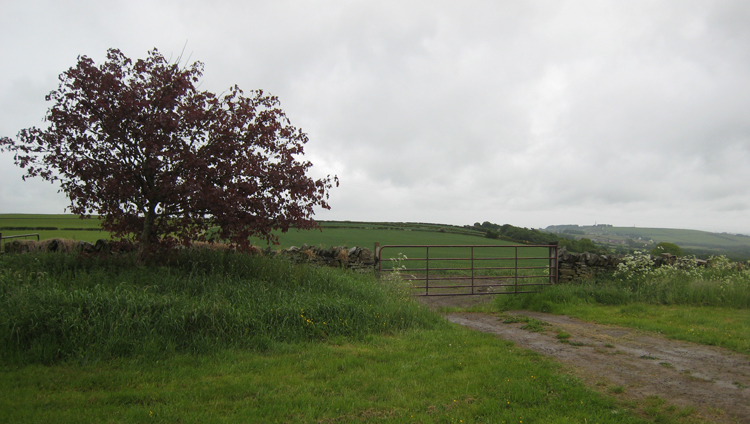
He had two sons, Robert and John. In 1798, three years after son Robert Mitcheson (generation 2) married Ann Roxby, the name Robert Mitcheson appeared for the first time as an owner/occupier of a property in Burnop and Hamsteels Township.7 This was probably Hurbuck farm, which the family appear to have either worked themselves or rented out to tenants while they farmed at Knitsley.
By 1824, Robert (generation 2) also owned land in Knitsley and his son Robert (generation 3), now in his early 20s, was living in Knitsley.8
Over the years, various members of the Mitcheson family owned or rented several farm properties in this area. Farming was hard work, but grain brought high prices during the Napoleonic wars (1803-1815). County Durham farmers also raised cattle and sold milk and meat to feed the region’s fast-growing population of coal miners. Meanwhile, land owners could boost their income from renting to other farmers, and land ownership was of value in itself in that it brought both social status and voting rights.
Map Source: Ordnance Survey of England and Wales Revised New Series, 1902. Vision of Britain Historical Maps. www.visionofbritain.org.uk/maps/sheet/new_series_revised_medium/sheet_04 (accessed Feb 28, 2022)
Sources:
1. Consett and Derwent Heritage Initiative Facebook page, The Grave Wood, posted Nov. 15, 2016, https://www.facebook.com/groups/213017885386150/permalink/1252654144755847/ (viewed March 13, 2022)
2. England, Select Births and Christenings, 1538-1975 (database on-line, www.Ancestry.ca, Robert Mitchinson, 1728, viewed Dec. 30, 2021) citing, England, Births and Christenings, 1538-1975. FamilySearch, 2013.
3. Northumberland and Durham Family History Society, “Northumberland and Durham Memorial Inscriptions;” Lanchester, All Saints, Durham, England, database, for Robert Mitcheson, 1815, Find My Past, (www.findmypast.com, viewed Dec. 30, 2021). Note: This transcription was incorrect about the date of Robert’s death. According to the burial record on Ancestry, he was buried on November 15, 1812, and he was included in the Index to Death Duty Registers 1796-1903 in 1813 on Find My Past.
4. Northumberland and Durham Family History Society, “Durham Marriages,” Medomsley, Durham, England, database, for Robert Mitcheson, 1757, Find My Past, (www.findmypast.com, viewed Dec. 30, 2021).
5. England Marriages, 1538-1973, Lanchester, Durham, England, database, for Robert Mitcheson, 1795, Family Search Intl, Find My Past, (www.findmypast.com, viewed Dec. 30, 2021).
6. Durham County Record Office. Quarter Sessions – Land Tax Returns, Chester Ward West 1759-1830, www.durhamrecordsoffice.org.uk, for Robert Mitcheson, Knitsley, (viewed March 02, 2022).
7. The National Archives, Land Tax Redemption Office: Quotas and Assessments, IR23; Piece: 23 Ancestry.com. UK, Land Tax Redemption, 1798, www.ancestry.com, database on-line, for Robt Mitchinson 1798, (viewed March 15, 2022), citing Land Tax Redemption Office: Quotas and Assessments. IR23. Records of the Boards of Stamps, Taxes, Excise, Stamps and Taxes, and Inland Revenue. The National Archives, Kew, Richmond, Surrey, England.
8. Durham County Record Office. Quarter Sessions – Land Tax Returns, Chester Ward West 1759-1830, www.durhamrecordsoffice.org.uk, for Robert Mitcheson, Knitsley (viewed March 02, 2022).

